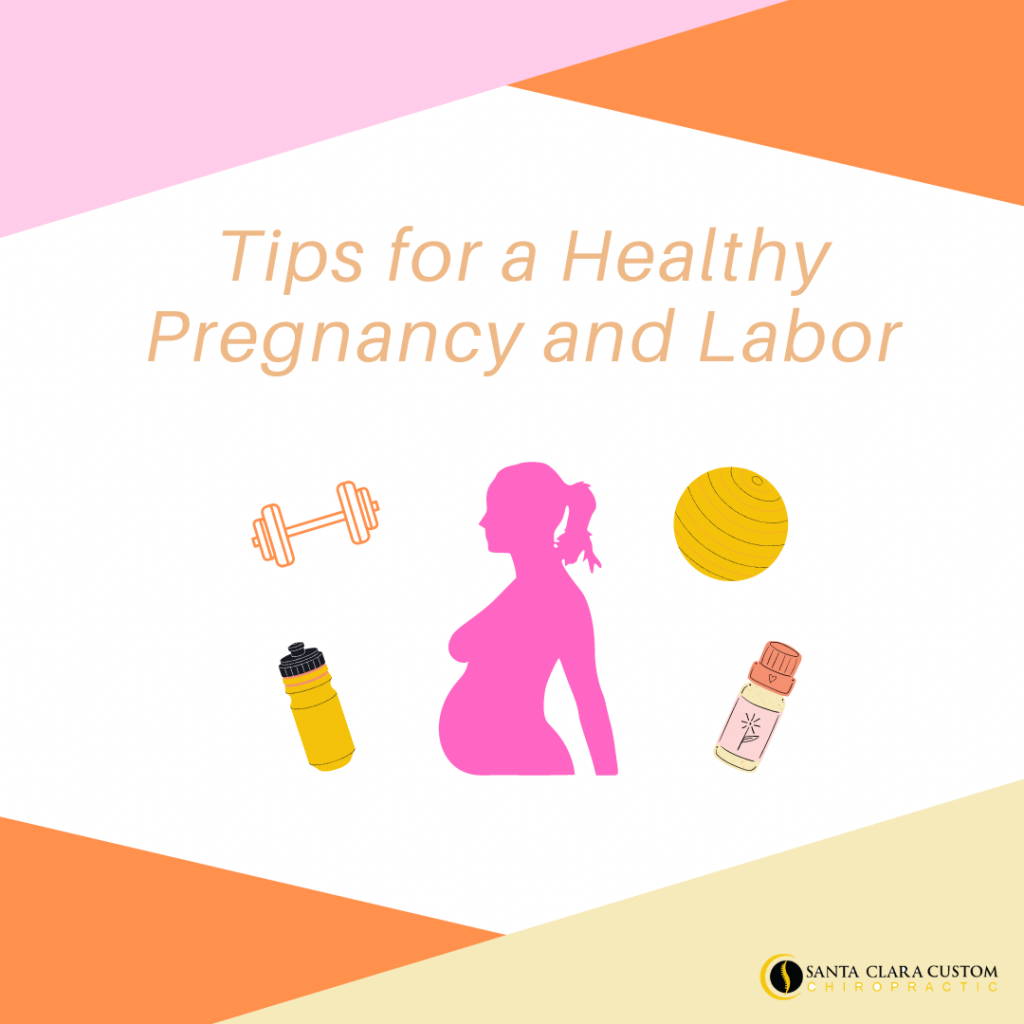Carrying your baby for 9 months is a huge task and we are here to help you have a comfortable and healthy pregnancy throughout all three trimesters as well as through labor. There’s a variety of different tools and tips to help you safely and comfortably navigate your journey through pregnancy and labor.
What tools should I have for a comfortable and healthy pregnancy?
We recommend having access to an exercise ball, body or pregnancy pillow, wedge pillow, lacrosse ball and a donut cushion. All of these will be useful throughout your pregnancy and labor,

but let’s discuss how they will benefit you during each phase of your pregnancy:
First Trimester Self-Care
-
Throughout the first trimester, most expectant moms feel very tired and fatigued, so we always recommend every momma to listen to your body and rest when needed as well as staying hydrated. We also recommend that you begin a gentle daily stretching routine as well as continuing with your normal exercise routine for a healthy pregnancy
- Regular self-care – walks, reading, journaling, relaxing – this can include whatever self-care looks like for you (within your doctors recommendations) and of course we always recommend regular chiropractic appointments!
Second Trimester (and on…)
- An Exercise Ball – you are going to want to use the exercise ball to sit on to help gently train your core
- Body or Pregnancy Pillow for knee, hip, belly, and shoulder support – this is great for your third trimester as well
- Wedge Pillow for belly support while sleeping on your side
- Lacrosse Ball to self-massage

Third Trimester “Must-Haves”
- Donut Cushion to provide relief from conditions such as hemorrhoids, tailbone pain and sciatica, which can pop up during pregnancy
- Magnesium Lotion to support baby’s development – Dr. Mati recommends 8 Sheep Organic Sleepy Lotion
- Epsom salt baths to relieve aches and pains
- Magnesium Supplement to support muscle relaxation and nervous system health
- Bellyband or taping (in-office treatment) for support and comfort
Healthy habits throughout your pregnancy
- Stay hydrated to help transport nutrients to meet baby’s development needs – a healthy pregnancy starts with hydration
- Meditate – this may even help guide you through contractions and labor generally
- Stretch and stay active. While most of the stretches and chiropractic treatments will look similar throughout the trimesters, the most noticeable difference is the frequency of care as well as changing techniques to lower force techniques for adjusting. For example – moving from weighted exercises to banded or bodyweight exercises or adjusting on your side instead of face down as your pregnancy progresses. For more information on chiropractic and exercise during pregnancy, check out our previous blog post. You can also find exercises and stretches for pregnancy on our YouTube channel:
What can I do to prepare for birth?
- Take a birthing class. Birthing classes are a great way to prepare for labor by knowing breathing patterns and how your partner can help. Check your closest birth center or hospital to find a class near you. Dr. Mati’s favorite is Mamaste Fit.
- Pack the hospital bags. As you’re preparing for birth, try to pack a hospital bag at around 36 weeks. Some essentials include photo ID, insurance card and the name and phone number of your doctor. And a variety of snacks! Here is a detailed list from baby center to prepare you for natural birth as well as a C-section
- Be aware of signs of labor. Here are a few things you can watch out for to know if it is real labor or false labor:
- Lightening is the word used to describe when the baby drops lower in the pelvis. If this is your first baby, it may happen a few weeks before giving birth. With the second or third baby, it only happens when labor it starting. Some signs of lightening are being able to breath better since the baby is not compressing the lungs as much.
- Passing of the mucus plug happens when the cervix dilates and the mucus plug, that sealed off the cervical canal during pregnancy, discharges.
- Learn about true versus false contractions here as well as a few more signs of labor.
When it’s time for baby to come
Every birth is different but there are a few things that can be done to make the birthing process more comfortable. It’s important to internalize that giving birth is work; finding coping mechanisms can help to ease the feelings of pain in a more natural way.
- Aroma therapy using essential oils like lavender, bergamot, sage or jasmine can also be helpful to create a more relaxing atmosphere. Music can also help as a grounding technique.
- Encouraging movement during labor can help to cope with the contractions by using gravity for the baby to move through the birth canal.
- Try to give birth in an upright position if possible to have a more optimal pelvic space, more efficient contractions, less pain, gravity assistance, and hopefully – shorter labor.
- A chiropractors’ favorite is applying counter pressure to the low back or sacrum. This can be done by the partner. The American Pregnancy Association describes this as “applying heavy pressure on painful areas of the lower back (or sacrum)… Fold your fingers flat against the palm of your hand. Keeping your wrist straight, use the knuckles to press into her pain. Position yourself so your body will lean into your arm to increase the pressure from your fist. The heel of the hand may be used for counter pressure, but it is more uncomfortable on the wrist for long periods.” See the video below for an example of how this can be done. While under care, our doctors also prefer to have your last appointment pre-birth with both you and your partner. This way, we can teach them how to support and apply the counter pressure during labor and assist with delivery.
How else can my partner support throughout labor and delivery?
- Knowing what to expect during labor will help the partner to best assist the mother as well as keep her calm throughout.
- Timing the contractions and letting mom rest as much as possible before going to the hospital. A general rule is that if the contractions are 5 minutes apart or less, lasting 1 minute or longer and the contractions continue like this for 30 minutes, you can go to the hospital.
- While you are waiting at home, remind mom to stay hydrated by offering her water, herbal tea or Gatorade as well as offering her small non acidic foods like trail mix, yogurt or fruit. In the hospital, she won’t be able to eat but experienced nurses will be there to guide you two through it.
- While in the hospital, be there for her by holding her hand, coach her through contractions, get her ice chips or a cold wash cloth and help her change positions. Keep reminding her of what an amazing job she is doing. Be her advocate!
There are so many ways that chiropractic care can help as you’re preparing for a healthy pregnancy. For a customized plan and treatment throughout your pregnancy journey, be sure to schedule an appointment with one of our Prenatal Chiropractors today!






